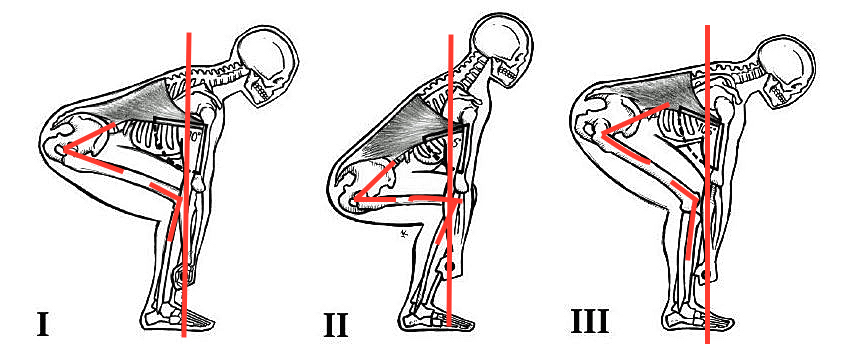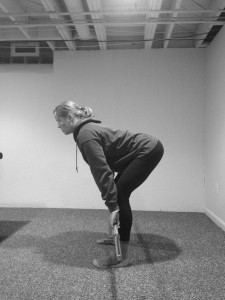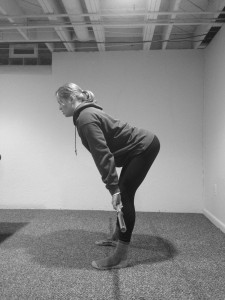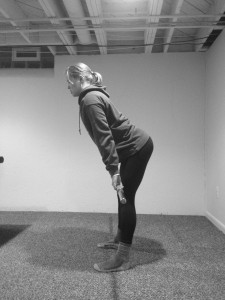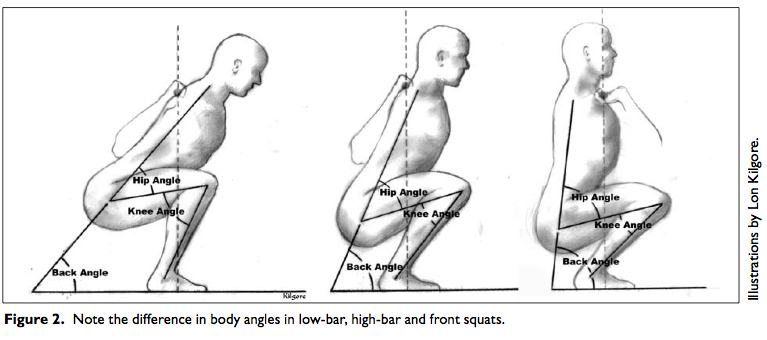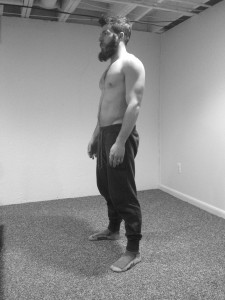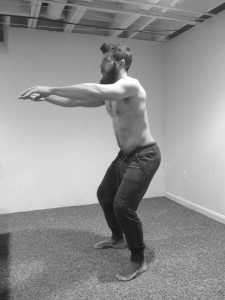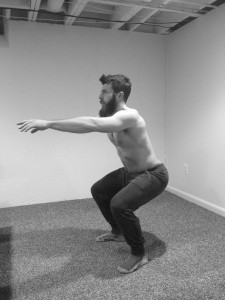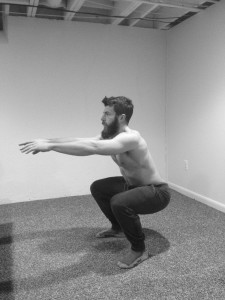In the simplest sense, a squat is sitting down then standing back up, and a deadlift is bending over and picking something up. They serve two very functional, but very distinct purposes. Despite this obvious difference, when it comes to performing these exercises with a barbell or other equipment in the box, I often see people confuse the two movement patterns. This is because there is more to the movements than just the fact that the bar is in your hands in one, and on your shoulders in another. Identifying the difference between the deadlift and the squat is essential to your CrossFit training, as they are more than just two exercises. They are the foundational movement patterns for many other exercises that we perform, including the kettlebell swing, pistol squat, box jump, ball slam, wall balls, the clean and snatch.
Here, we are going to break down the mechanics of the movements.
The points of performance of a squat, as defined in the CrossFit Level One Training Guide are:
Set-up:
- The stance is with the heels at shoulder width
- Full extension at hips and knees
- Weight on heels
- Keep the chest up and brace the abdominals to maintain a neutral spine
Execution:
- Hips travel back and down
- Bottom of squat is when the hip crease is below the top of the kneecap (“below parallel”)
- Knees stay in line with the feet
- Head position is neutral
Finish:
- Return to full extension at the hips and knees to complete the movement
The points of performance of a deadlift, as defined in the CrossFit Level One Training Guide are:
Set-up:
- Stance is with the heels between hip width and shoulder width
- Weight in heels
- Keep the chest up and brace the abdominals to maintain a neutral spine
- Shoulders over or slightly in front of the bar
- Bar in contact with the shins
- Arms straight
- Symmetrical grip outside the knees, just wide enough to not interfere with knees
- Head neutral or looking on the horizon
Execution:
- Drive through the heels
- Extend legs while hips and shoulders rise at the same rate (hip angle stays the same)
- Once the bar passes the knees, the hip opens
- Bar maintains contact with the legs the entire time
- On return to the floor, push hips back while the shoulders move forward, delaying the knee bend
- Once bar descends below the knees and the torso angle is set, bend the knees to return the bar to the set-up position
Finish:
- The movement finishes with the bar lifted to full extension of the hips and knees
Central to the deadlift is the hip hinge, with the knee then hip extending in sequence as the weight is pulled from the ground. From the top, it is a hip hinge with minimal knee bend. You will feel it most in the posterior chain, or the glutes, hamstrings and back.
This image displays 3 different people at the deadlift set up position. Different leg, back and arm lengths will change the ratio of the hip and knee angles. Two things remain constant in each example.
- The angle of the hip is more acute than the angle of the knee.
- The shoulders are in front of the bar, and the shoulder blades are directly above the bar. When trying to determine your deadlift set up position, this is the salient point. Anatomical differences change hip/knee angles so a correct deadlift looks different for everyone, as shown above, but this point of performance will remain constant. In all three images, a straight line intersects the bar and shoulder blades.
From image 1 to 2, the knees extend while the hip extends only very slightly, keeping the torso at a similar angle.
In image 2 to 3, as the bar passes over the knee, the hips begin to extend significantly and the knee is soft but almost fully extended. The torso begins to move upright.
In image 3 to 4, the hip and knee extend fully.
In contrast, our squat is knee and hip flexion, with an upright torso, seeing the knee and hip flex and extend together as you squat and stand up. The squat will be felt more in the quadriceps, and the more upright your torso is, the more it will be felt here, rather than in the posterior. By definition, the more upright the torso, the less hip flexion there is, as we can see by the different back angles below.
The image above displays the low bar back squat, high bar back squat and front squat. In each instance, the angle of the knee is more acute, or equal to, the angle of the hip. This is in stark contrast with the typical deadlift, which as we saw above, sees the hip at a far sharper angle than the knee. Different bar placement creates different ratios of hip to knee flexion as it changes the center of mass. Consequently, a low bar back squat targets the posterior more than a front squat, because it is a more hip dominant movement.
Here, we see that in the squat, from the top position to the bottom position (and visa versa), the knees and hips flex at roughly the same rate. In the bottom position, his knees and hips are at a similar angle and he is trying to keep his torso upright.
Two pretty different movements, huh?
All to often, I see people abandon the deadlift pattern for the squat. This is typically for two reasons, almost always in combination. A lack of understanding is number one. Hopefully this article helped address that. Number two is the quad dominance and weak and inactive glutes that come with modern lifestyles. We sit too much, so our butts are lazy and don’t always work like they are meant to. Single leg deadlifts, when done correctly, can be a fantastic training tool to get everything firing correctly. I will be posting a video on this exercise later this week. The deadlift pattern of an exaggerated hip hinge with little knee bend proves elusive for many and when done incorrectly completely changes the exercise stimulus.
Practice these patterns and know the difference between the squat and the deadlift to make sure you are performing these foundational movements correctly. When you go to pick up a slam ball, set up in a deadlift, and remember the hip hinge on the kettlebell swing. If you want to build a strong, beautiful butt, practice your deadlift form. Keep your chest upright when you do wall balls to prevent rolling forward on your toes. Always be mindful of how you are moving so that you get the intended results from your workout.
To read some more on the deadlift, check out this excellent article by Mark Rippetoe.
https://www.t-nation.com/training/ignorant-when-it-comes-to-deadlifts




